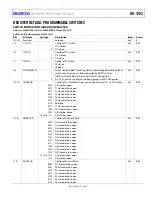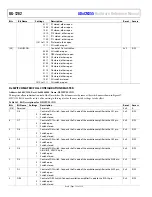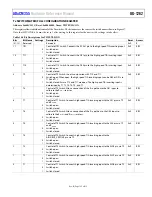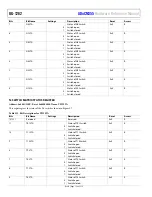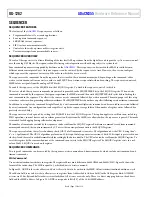
UG-1262
Rev. B | Page 117 of 312
PROGRAMMABLE SWITCHES CONNECTING THE EXTERNAL SENSOR TO THE HIGH SPEED
DAC AND HIGH SPEED TIA
The
provides flexibility for connecting external pins to the high speed DAC excitation amplifier and to the high speed TIA
inverting input. The external pin connections provide many options for impedance measurements to different sensor types and allow an ac
signal to be coupled onto the dc bias voltage of a sensor. When configuring these switches, the user must account for the switch settings
on the output of the low power amplifiers. See Figure 16. On power-up, all switches are open to disconnect the sensor. For details on the
recommended configuration in hibernate mode, see the Recommended Configuration in Hibernate Mode section.
Dx SWITCHES
These switches select the pin to connect to the high speed DAC excitation amplifier output. For an electrochemical gas sensor impedance
measurement, this pin is the CE0 or CE1 pin. The Dx switches can be connected to an external calibration resistor via the RCAL0 pin if
the DR0 switch is closed.
Px SWITCHES
These switches select the pin to connect to the high speed DAC excitation amplifier P input. For an electrochemical gas sensor, this pin is
typically RE0 or RE1. The Px switches can be connected to an external R
CAL
via the RCAL0 pin if the PR0 switch is closed.
Nx SWITCHES
These switches select the pin to connect to the high speed DAC excitation amplifier N input. The Nx switches can be connected to an
external R
CAL
via the RCAL1 pin if the NR1 switch is closed.
Tx SWITCHES
These switches select the pin to connect to the high speed TIA inverting input. The Tx switches can be connected to an external R
CAL
via
the RCAL1 pin if the TR1 switch is closed.
OPTIONS FOR CONTROLLING ALL SWITCHES
Figure 27 shows all of the switches connected to the high speed DAC excitation amplifier and to the inverting input of the high speed TIA.



















